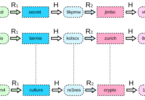GIS software serves specific purposes in various professional contexts. It provides tools for spatial data analysis, going beyond conventional map-making. Industries ranging from urban planning to environmental conservation utilize it for detailed geographical data management and analysis.
Understanding GIS Software
Geographic Information System (GIS) software serves as a tool for managing, analyzing, and displaying geographic data. This software enables users to visualize spatial information in a map format, offering a more comprehensive understanding of specific data sets. Through the software, one can correlate different types of data and interpret their geographical relationships.
Key Functionalities of GIS Software
Data Collection and Integration
GIS software facilitates the collection and integration of various data forms, such as satellite imagery, aerial photography, and statistical data. This integration creates a dynamic platform where users can compile and manage various data sets in a unified system.
Spatial Analysis
One of the primary uses of the software is spatial analysis. This feature allows users to examine geographical components and their relationships. Through spatial analysis, patterns and trends that might not be evident in non-mapped data can be identified and understood.
Mapping and Visualization
Creating detailed maps is a core function of the software. These maps enable users to visualize and interpret their data spatially. From simple choropleth maps to complex 3D models, GIS mapping tools help in understanding spatial patterns and relationships.
Asset and Resource Management
In fields like urban planning and natural resource management, this software is invaluable. It aids in tracking and managing assets, planning resource allocation, and monitoring changes over time in the environment.
Application Areas of GIS Software
Environmental Management
This software plays an important role in environmental management. It’s used for tracking environmental changes, assessing the impact of various factors on ecosystems, and planning conservation efforts.
Urban Planning and Infrastructure Development
Urban planners and developers utilize it to design and manage urban spaces. This involves analyzing spatial data for infrastructure development, zoning, and urban growth planning.
Disaster Response and Management
During natural disasters, this software provides critical support in emergency response and management. It helps in mapping affected areas, planning evacuation routes, and coordinating relief efforts.
Transportation and Logistics
In transportation and logistics, it is used for route planning, traffic management, and logistics management. It helps in optimizing routes, reducing travel times, and improving overall efficiency.
Public Health and Epidemiology
This software aids public health professionals in tracking disease spread, identifying high-risk areas, and planning healthcare facilities. It has become an essential tool in epidemiology for managing and preventing health crises.
GIS Software in Action
Exploring a real-world scenario highlights how the software functions. For instance, in urban planning, It can be used to analyze the impact of a new development on traffic patterns. Planners can integrate traffic data, population density, and public transportation routes to create a comprehensive plan that addresses potential challenges and optimizes traffic flow.
Enhancing Agriculture and Land Management
The software’s utility extends significantly into agriculture and land management. Farmers and agricultural planners use this technology to optimize crop planning, soil management, and resource allocation. By analyzing spatial data, including soil composition, topography, and climate patterns, It assists in maximizing agricultural yields and sustainable land use. It’s instrumental in precision farming, where data-driven decisions lead to more efficient and environmentally friendly practices.
Historical Data Analysis for Informed Decision Making
Another vital use of this software is in analyzing historical data. This analysis assists in understanding long-term trends and patterns in various fields, such as climate change, urban development, and resource management. By studying past data, planners and researchers can make more informed decisions about future projects and policies. For example, urban planners might analyze historical traffic data to predict future transportation needs and plan accordingly.
Public Safety and Law Enforcement
In public safety and law enforcement, the software provides critical assistance. Law enforcement agencies use it for crime mapping, analyzing patterns of criminal activity, and planning patrol routes. In public safety, it aids in hazard analysis, emergency planning, and resource deployment during crises. It enables authorities to respond more effectively to incidents by providing a spatial understanding of the situation.
GIS Software: A Tool for Today and Tomorrow
The software has evolved into a versatile tool used across various industries and disciplines. As technology advances, its capabilities continue to expand, offering more precise and detailed data analysis. This software is not just about creating maps but about understanding the story behind the data and making informed decisions.
Conclusion
GIS software is more than just a tool for creating maps. It’s an integral part of data analysis, planning, and decision-making across diverse fields. By integrating different data sets and providing tools for spatial analysis and mapping, the software helps professionals in many industries to understand and solve complex problems. As technology continues to advance, the capabilities and applications of the software are likely to expand further, making it an even more indispensable tool in the future.







